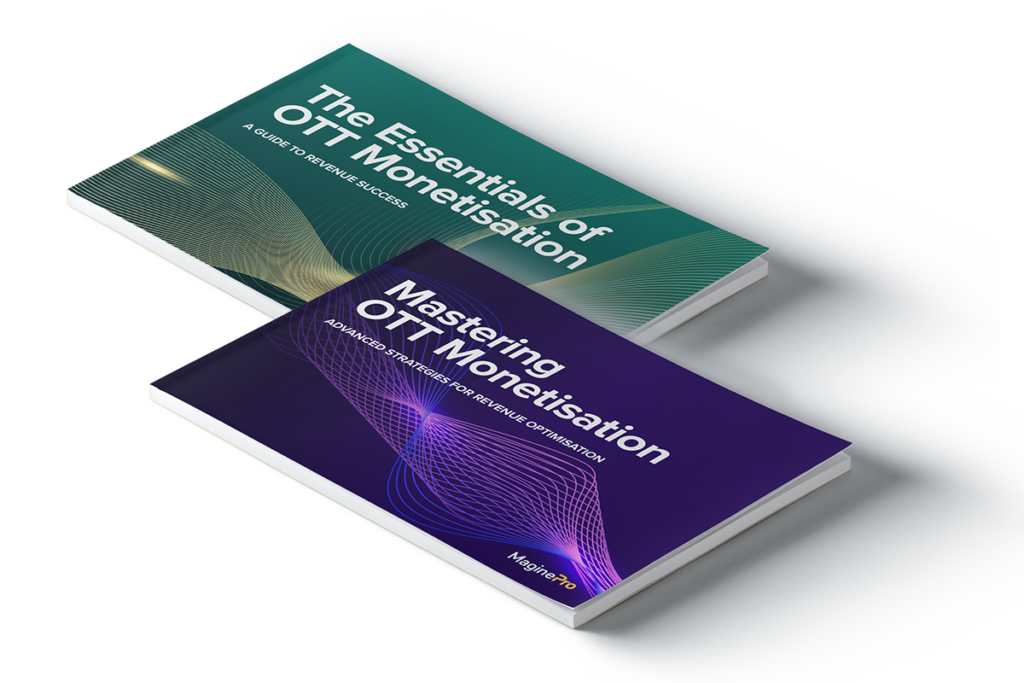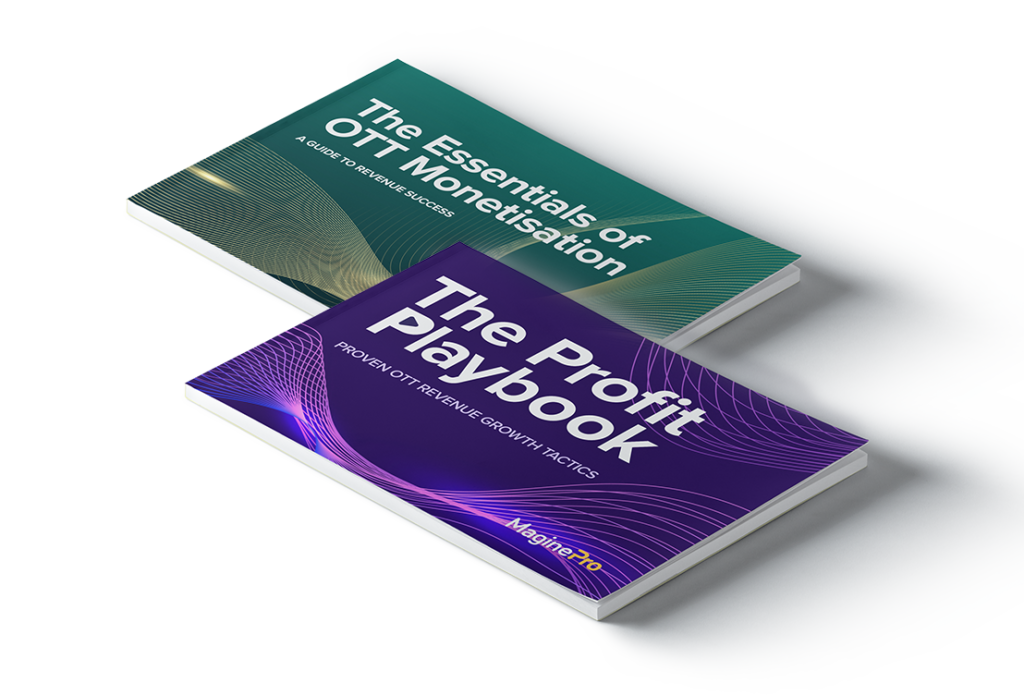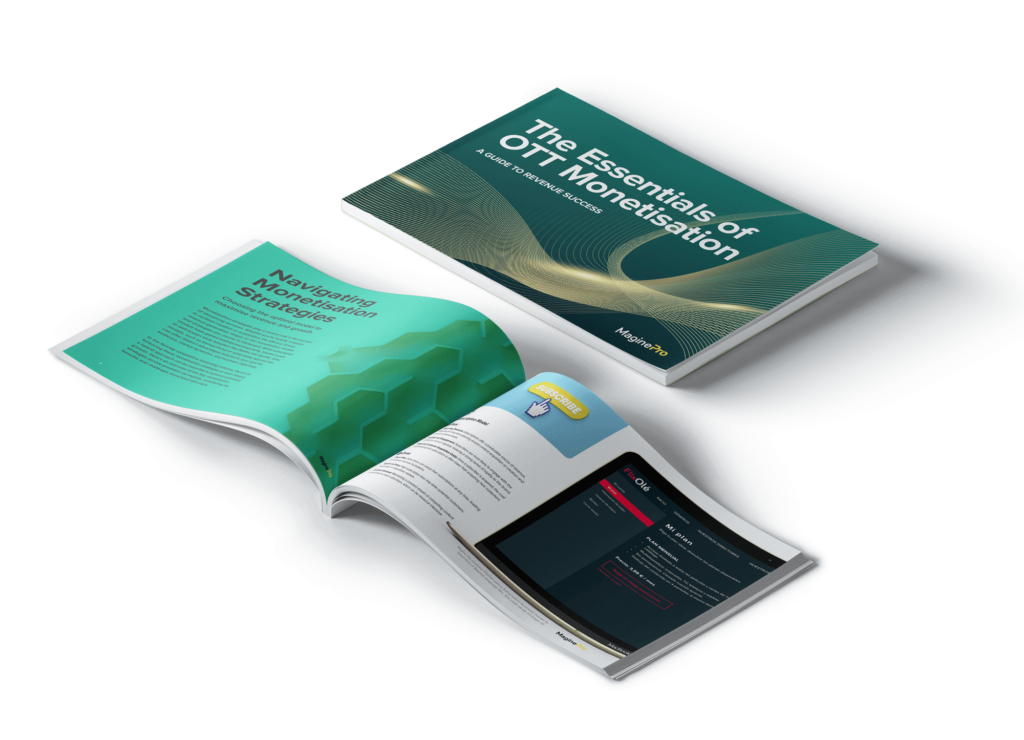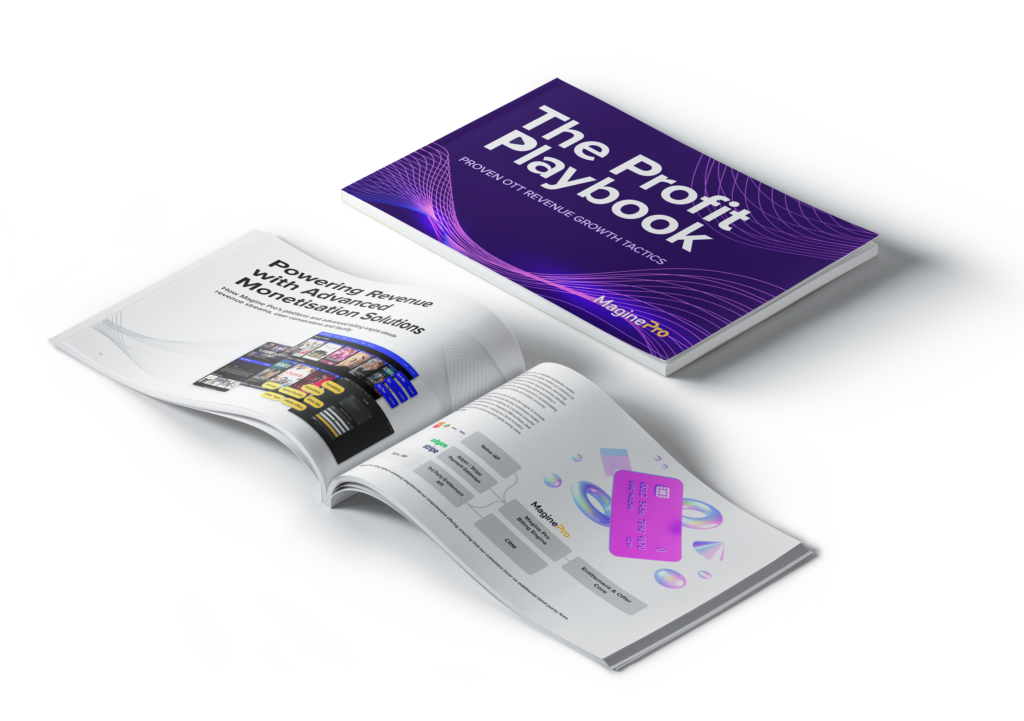Decoding the Pricing Puzzle: Navigating Streaming Platform Costs

Pricing models come in a variety of shapes and sizes which makes it tricky to compare OTT platform vendors.
- Fixed Per-User Pricing: A fixed fee is charged per subscriber or active user. Since the vendor is taking a risk, there is often a high premium in order to cover costs in the event that you have very high activity per user. It’s simple to understand but does not scale.
- Bucket Pricing: You pay a fixed fee each month that includes a certain amount of users or usage. It is predictable but you have to stay within the bucket in order for it to be worth it. If you grow, there could be high overage or you have to purchase another bucket that you likely will not fill. If you lose users, you will be paying for something you don’t need.
- Package Pricing: You like the price of the Basic Package but prefer the options in the Premium Package. Unfortunately, you can’t get the best of both worlds so you end up either disappointed by the Basic or perhaps over budget with the Premium.
- Tiered Usage Pricing: The most transparent and scalable option that we at Magine Pro prefer to use. You pay less on a per-unit level as you grow which increases your Gross Margin and lets you focus more of your capital on content and customer acquisition. The other benefit is that you only pay for what you use, as there are no minimum commitments or expensive overages.
Complexity in Comparing
While this diversity in pricing models aims to cater to the diverse needs of customers, it also contributes to the complexity of vendor comparisons. Several other factors also contribute to this complexity:
- Feature Parity vs. Value: Vendors may offer similar features but bundle them differently across pricing models, making direct feature comparisons challenging.
- Hidden Costs and Add-Ons: Additional fees for integrations, support, training, or customization can significantly impact the total cost of ownership but may not be immediately apparent.
- Scalability and Flexibility: Pricing models often lack transparency regarding how costs will scale as the business grows or usage increases, making long-term budgeting difficult.
- Contractual Terms: Variations in contract terms, such as billing frequency, renewal terms, and cancellation policies, further complicate comparisons.
Navigating the Pricing Maze
Despite the complexity inherent in SaaS pricing models, businesses can employ several strategies to navigate the maze and make informed decisions:
- Define Requirements Clearly: Start by clearly defining your requirements and prioritizing features that are critical for your business. This will help you evaluate vendors based on your specific needs.
- Request Detailed Quotes: Reach out to vendors for detailed quotes that outline all costs, including any potential add-ons or hidden fees. Ask for clarity on pricing tiers and scalability.
- Consider Total Cost of Ownership: Look beyond the sticker price and consider the total cost of ownership over time, including implementation, support, and possible increase in headcount.
Ask and Validate
While comparing SaaS vendors based on pricing models can be challenging, it all comes down to numbers in the end. If you have a forecast then Magine Pro can help you with a Business Model so you know exactly what your costs will be over time. We will gladly go through it in detail so you feel confident and comfortable as you embark on your streaming service journey with Magine Pro.
______________________________________________________________________________________
Interested in learning more about OTT business models? Our comprehensive e-guide has you covered with all the essentials. And if you’re eager to delve into strategies for maximising revenue through content monetisation, don’t miss our white paper, ‘The Profit Playbook: OTT Revenue Growth Tactics‘.
Book a meeting with a member of the team to discuss pricing models and monetisation in more detail.
Top 10 Transactional Monetisation Tips for OTT Platforms
As the streaming landscape continues to evolve, OTT providers are presented with a myriad of opportunities to capitalise on transactional models and boost revenue. In this blog, we delve into the art of maximising revenue with top transactional monetisation tips tailored specifically for OTT platforms. Whether you’re navigating the challenges of one-time purchases, rentals, or electronic sell-throughs (EST), these insights can guide you in optimising your monetisation approach, ensuring a seamless experience for both your service and your users.
- Diverse Content Selection: Offer a wide range of high-quality content to cater to diverse customer preferences. Regularly update and expand your content catalogue to encourage customers to return and remain engaged.
- Transparent Pricing: Clearly communicate the pricing for each transaction, including any additional fees, to build trust with customers. Avoid hidden charges or unexpected costs.
- User-Friendly Checkout: Streamline the checkout process to make it as frictionless as possible. Implement a straightforward payment system, and offer multiple payment options to accommodate various customer preferences.
- Recommendation and Personalisation: Leverage data analytics to understand user behaviour and preferences. Use this information to offer personalised recommendations and upsell complementary content.
- Promotions and Discounts: Implement occasional promotions, discounts, and bundling options to encourage more transactions and foster customer loyalty. Limited-time offers can create a sense of urgency.
- Mobile Optimisation: Ensure that your service is mobile-responsive, as many users consume content and make purchases on smartphones and tablets. A mobile-friendly interface can enhance the user experience.
- Secure Payment Processing: Invest in robust security measures for payment processing to protect customer data and gain their confidence.
- Customer Support: Provide responsive and effective customer support to address any issues or enquiries promptly. Satisfied customers are more likely to return and make future transactions.
- Feedback Loop: Continuously monitor customer behaviour and collect feedback to make data-driven decisions for improving your transactional model and user experience.
- Competitive Analysis: Stay informed about market trends and competitors to adjust your pricing and offerings accordingly.
By implementing these tips you can effectively optimise transactional monetisation models, enhance user satisfaction, and ultimately drive revenue growth. At Magine Pro, we support our customers who operate transactional-based services by enabling them to set transactional offers on movies and series, including rental and electronic sell-through (EST) simultaneously. These transactional offers can be seamlessly integrated with subscriptions, advertisements, and discount codes. We also endorse hybrid services that blend transactional and subscription models, allowing users to rent or acquire day passes for exclusive content or events.
To delve deeper into transactional monetisation models and strategies, download our latest FREE e-guide and white paper. The Essentials of OTT Monetisation: A Guide to Revenue Success explores the intricacies of subscription, transactional, and advertising models. Its companion white paper, The Profit Playbook: Proven OTT Revenue Growth Tactics is also available to download and dives even deeper into monetisation, sharing valuable insights into strategies that ensure churn reduction and long-term revenue maximisation.
If you’re interested in discussing monetisation models and the capabilities of Magine Pro’s advanced billing engine, connect with our experienced team. Additionally, visit our blog for more resources and explore our entire collection of white papers available for download. To stay in the loop, subscribe to the Magine Pro e-newsletter, for all our latest news, partnerships, and products, and to find out which industry events we’ll be attending next.
Mastering the Mix: How to Harness the Power of Hybrid Monetisation for OTT
In the dynamic landscape of streaming services, the adoption of hybrid monetisation models is reshaping the industry’s approach to revenue generation. Unlike traditional models, hybrid strategies seamlessly integrate subscription, transactional, and advertising elements, offering a versatile and adaptive solution for both providers and consumers.
For consumers, hybrid models translate into a more dynamic and engaging viewing experience. The mix of subscription content, exclusive purchases, and targeted advertisements creates a diverse content ecosystem. Viewers can explore a wide range of offerings, discovering new content while enjoying the benefits of their chosen monetisation model.
For providers, hybrid enables them to experiment with different models to find the optimal mix that suits their content, audience, and market conditions. This flexibility enables them to adapt to changing trends and consumer behaviour, reducing the risks associated with a rigid, single-tier approach. To ensure the successful implementation of a hybrid monetisation model, a robust strategy is essential. Here’s our perspective on the key priorities that providers should focus on to fully benefit from a hybrid approach.
Making Hybrid Monetisation Work: What’s Needed
- User-Centric Approach: Understanding user preferences and behaviour is crucial. Service providers must tailor their hybrid models based on audience demographics, consumption patterns, and market trends to ensure maximum effectiveness.
- Seamless Integration: The success of hybrid monetisation hinges on the seamless integration of subscription, transactional, and advertising components. A well-designed user interface and clear communication about the different offerings create a positive user experience.
- Data-Driven Decision Making: Leveraging data analytics is essential for optimizing hybrid models. Analysing user data helps providers identify trends, preferences, and areas for improvement, enabling them to refine their strategies and content offerings.
Achieving Success with Hybrid Monetisation
- Strategic Content Curation: Offering a diverse range of content that caters to different user segments is key. This includes a mix of subscription-based, transactional, and ad-supported content, ensuring there’s something for everyone.
- Innovative Marketing Campaigns: Providers should implement creative marketing campaigns highlighting their hybrid model’s benefits. This could include promotions, exclusive previews, and limited-time offers to entice both existing and potential subscribers.
- User Education: Communicating the advantages of the hybrid model to users is crucial. Service providers should educate their audience on the value of each monetisation element and how it contributes to an enriched streaming experience.
The rise of hybrid monetisation models marks a pivotal moment in the evolution of streaming services. By combining the strengths of subscriptions, transactions, and advertising, both service providers and consumers stand to benefit. Providers can better navigate market fluctuations and economic uncertainties with greater resilience, as viewers benefit from a more personalised and adaptable streaming experience.
Explore the depths of hybrid monetisation models and strategies by accessing our newest FREE white paper, The Profit Playbook: Proven OTT Revenue Growth Tactics. Gain valuable insights and strategies aimed at reducing churn and maximising long-term revenue. Additionally, its companion e-guide, The Essentials of OTT Monetization: A Guide to Revenue Success, is ready for download, which meticulously navigates the intricacies of subscription, transactional, and advertising models, revealing the power of a carefully crafted hybrid approach to enhance financial resilience amid market fluctuations. Further resources on monetisation and Magine Pro’s billing capabilities can be found on our blog.
If you’re interested in discussing monetisation models and the capabilities of Magine Pro’s advanced billing engine, connect with our experienced team. To stay in the loop, subscribe to the Magine Pro e-newsletter, for all our latest news, partnerships, and products, and to find out which industry events we’ll be attending next.
The Evolution of SVOD: Unleashing Potential Through Hybrid Monetisation Models
Subscription Video on Demand (SVOD) has become synonymous with the way we consume content today. However, the SVOD landscape is now experiencing a significant transformation, marked by the widespread adoption of hybrid monetisation models. Unlike traditional single-tier approaches, hybrid models seamlessly combine subscription-based revenue streams with transactional and advertising elements, offering a more dynamic and adaptable strategy that offers new possibilities for both service providers and viewers.
The Power of Hybrid Monetisation:
Hybrid monetisation models leverage the strengths of diverse revenue streams, providing service providers with more flexibility. Subscription revenues offer stability, while transactional elements cater to one-time users or those seeking premium content. Simultaneously, advertising opens avenues for broader audience reach, making it an all-encompassing approach that maximises revenue potential.
The Benefits of Hybrid Monetisation:
- Diversified Revenue Streams: One of the key advantages of hybrid models is the creation of multiple revenue streams. By combining subscriptions, transactions, and advertising, service providers can establish a more robust financial foundation, reducing dependence on a single source of income.
- Enhanced User Engagement: Hybrid models cater to a diverse audience by providing options for both subscription-based and transactional content. This flexibility encourages users to engage with the platform in various ways, ensuring a more personalized and satisfying experience.
- Access to Exclusive Content: Transactional elements within hybrid models allow for the sale of premium or exclusive content on top of the basic subscription offering. This strategy not only attracts users seeking exclusive material but also provides an additional revenue avenue for service providers.
- Wider Audience Reach: The inclusion of advertising components enables SVOD platforms to reach a broader audience, including those who might be hesitant to subscribe. This expanded reach enhances brand visibility and can convert free-tier users into paying subscribers over time.
How SVOD Anchors Hybrid
In a well-crafted hybrid monetisation strategy, SVOD often assumes a central role as the anchor. Subscribers can enjoy the richness of video-on-demand (VOD) content within a subscription and also capitalise on the flexibility of the hybrid model. This approach allows users to make one-time purchases for exclusive content or opt for a free environment supported by targeted ads. As the long-standing preferred model for service providers, SVOD continues to play a pivotal role in hybrid strategies. Its enduring appeal lies in its ability to foster sustained viewer loyalty through the convenience, personalisation, and high-quality offerings inherent in a subscription-based streaming service.
Forging Ahead with Hybrid Monetisation
Hybrid monetisation models unlock a spectrum of possibilities for streaming services. Through the deliberate integration of subscriptions, transactions, and advertising, service providers gain the ability to diversify revenue streams and navigate the challenges associated with financial fluctuations. Beyond financial benefits, the hybrid approach also promises viewers a more dynamic and personalised streaming experience. The future of SVOD is undoubtedly being shaped by the innovative fusion of monetisation strategies, offering mutual advantages for both providers and consumers.
To delve deeper into hybrid monetisation models and strategies, download our latest FREE e-guide, The Essentials of OTT Monetisation: A Guide to Revenue Success. This guide explores the intricacies of subscription, transactional, and advertising models, unveiling the strength of a meticulously designed hybrid approach in fortifying financial resilience against market fluctuations. Its companion white paper, The Profit Playbook: Proven OTT Revenue Growth Tactics is also available to download and dives even deeper into hybrid models, sharing valuable insights into strategies that ensure churn reduction and long-term revenue maximisation.
If you’re interested in discussing monetisation models and the capabilities of Magine Pro’s advanced billing engine, connect with our experienced team. Additionally, visit our blog for more resources and explore our entire collection of white papers available for download. To stay in the loop, subscribe to the Magine Pro e-newsletter, for all our latest news, partnerships, and products, and to find out which industry events we’ll be attending next.
E-GUIDES | The Ultimate Guide to OTT Video Monetisation
As the OTT industry continues to expand, streaming service providers find themselves wrestling with the dual challenges of revenue generation and expansion, all while combatting the impact of subscriber churn. In this dynamic landscape, where consumers are spoiled for choice, cultivating long-term customer loyalty is critical.
While your content investments and the quality of your user experience are both of great importance here, the choice of business model also has a huge influence on your ability to build and maintain a customer base. The right monetisation tools and strategies are also key to tackling user churn.
We’ve poured over a decade of experience in OTT into a brand-new monetisation e-guide and white paper. They offer invaluable insights into the pivotal role of monetisation models and proven strategies to achieve sustainable success. The e-guide and white paper also contain case studies from several of our successful OTT customer and are essential reading for new and experienced streaming service providers alike.
E-GUIDE:
The Essentials of OTT Monetisation: A Guide to Revenue Success
Just getting started in OTT? Or need a quick refresher? Dive into the fundamentals of OTT monetisation and learn how to tailor the perfect fit for your streaming service. Download ‘The Essentials of OTT Monetisation: A Guide to Revenue Success’ for an in-depth exploration of subscription, transactional, and advertising models.
You’ll learn why a hybrid approach is preferred for financial resilience. And you’ll gain insights into addressing challenges like subscription fatigue and invasive advertising. Chapters include:
- Navigating Monetisation Strategies: Choosing the optimal model to maximise revenue and growth.
- Monetisation Challenges: Hurdles in revenue generation for streaming service providers.

White Paper:
The Profit Playbook: Proven OTT Revenue Growth Tactics
Looking to take your OTT offering to the next level? Go straight to our white paper to discover strategies that will counter churn and improve the end-user experience within your streaming service. Download ‘The Profit Playbook: Proven OTT Revenue Growth Tactics’ to upgrade your insights into the financial aspects of OTT.
This white paper explores the power of data analytics and the importance of transparent pricing strategies. It also explains why Magine Pro’s advanced monetisation and billing engine is indispensable for video streaming services. Chapters include:
- Customer Retention through Monetisation: The importance of leveraging data and implementing transparent pricing strategies.
- Powering Revenue with Advanced Monetisation Solutions: How Magine Pro’s platform and advanced billing engine elevate revenue streams, user conversions, and loyalty.
- Navigating the Future of OTT Monetisation
Insights into Magine Pro’s approach to monetisation by CEO, Matthew Wilkinson
Ready to dive deeper into discussions about monetisation models, strategies, and the impactful capabilities of Magine Pro’s advanced billing engine? Connect with our experienced team, dedicated to assisting customers in delivering seamless streaming experiences, reducing churn, and maximising revenue and growth.
Visit our blog for additional resources and explore our collection of white papers for download. Ensure you subscribe to the Magine Pro e-newsletter to stay up-to-date with our latest news, partnerships, and products, and to find out which industry events we’ll be attending next.



